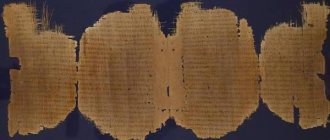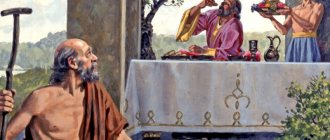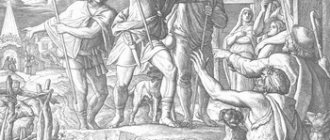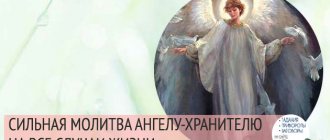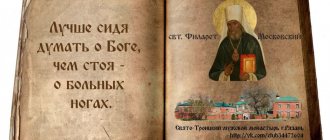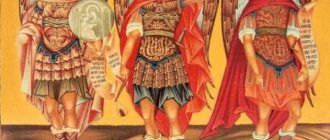All parables give a person useful knowledge if understood correctly. But sometimes Gospel illustrations contain very complex images that can confuse you. For example, the parable of the wedding feast. How to understand it?
He seems to divide people into those who are grateful and those who are not. And it seems that the first should be the righteous, but for some reason there are both evil and good among them. And what kind of person was punished by the king in the parable for dressing inappropriately for the occasion? Isn't Jesus' choice of image too complex? Apparently not, because today the meaning of all the symbols from the parable is probably known.
This parable tells about a feast at a noble person, it is in the Gospel in the Spirit versions
This parable is told in two Gospels, apparently written at the same time and based on common sources. Yet the versions are very different from each other.
The text in the Gospel of Matthew in more detail:
“Jesus, continuing to speak to them in parables, said: The kingdom of heaven is like a man king, who held a wedding feast for his son and sent his servants to call those who were invited to the wedding feast; and didn't want to come. Again he sent other slaves, saying: Tell those who are invited: behold, I have prepared my dinner, my bullocks and what is fattened, slaughtered, and everything is ready; come to the wedding feast. But they, despising this, went, some to their field, and some to their trade; The others, seizing his slaves, insulted and killed them. Hearing about this, the king became angry, and, sending his troops, destroyed their killers and burned their city. Then he says to his servants: The wedding feast is ready, but those who were invited were not worthy; So go to the highways and invite everyone you find to the wedding feast. And those slaves, going out onto the roads, gathered everyone they found, both evil and good; and the wedding feast was filled with those reclining. The king, entering to look at those reclining, saw a man there, not dressed in wedding clothes, and said to him: friend! How did you come here not wearing wedding clothes? He was silent. Then the king said to the servants: Having tied his hands and feet, take him and throw him into outer darkness; there will be weeping and gnashing of teeth; For many are called, but few are chosen.”
Mf. 22:1–14
This antique painting illustrates the parable of the wedding feast. The king who invites guests has clear features of Jesus Christ
In the Gospel of Luke, Jesus Christ clearly tells the same parable about the same request, but if in the first version the royal person was called to come to the feast, then in the second it is no longer necessarily the king, but simply some “one man.” And in general there are much fewer details:
“And he said to him: A certain man made a great supper and invited many, and when the time for supper came, he sent his servant to say to those invited: Go, for everything is already ready. And everyone, as if by agreement, began to apologize. The first one said to him: I bought land and I need to go and look at it; please forgive me. Another said: I bought five pairs of oxen and am going to test them; please forgive me. The third said: I got married and therefore cannot come. And, returning, that servant reported this to his master. Then, angry, the owner of the house said to his servant: go quickly through the streets and alleys of the city and bring here the poor, the crippled, the lame and the blind. And the servant said: Master! done as you ordered, and there is still room. The master said to the servant: go along the roads and hedges and persuade them to come, so that my house may be filled. For I tell you that none of those who are called will taste my supper, for many are called, but few are chosen.”
OK. 14:16–24
Many are called, but few are chosen
Many are called, but few are chosen From the Bible. Gospel of Matthew (chapter 20, v. 16): “So the last will be first, and the first last; For many are called, but few are chosen.” Allegorically: about many applicants for something that only a few truly worthy will get; about a business that many people do, but only truly talented people, real masters achieve success.
See what “Many are called, but few are chosen” in other dictionaries:
MANY - MANY, great in number, in large quantities; excessive, abundant; more often used in plural. number: many, or as a name: a lot, abundantly, southern, western. rich, kaluzh. horror, sitting down portly; to the highest degree, an abyss, an abyss, in abundance. Many animals... ... Dahl's Explanatory Dictionary
Gospel of Matthew - Blessed are the poor in spirit, for theirs is the kingdom of heaven. Blessed are those who mourn, for they will be comforted. Blessed are the merciful, for they will receive mercy. Blessed are the pure in heart... Blessed are the peacemakers... Blessed are those banished for the sake of righteousness, for theirs is the Kingdom of Heaven.... ... Consolidated encyclopedia of aphorisms
ANDREW THE FIRST CALLED - apostle of the 12, brother of the apostle. Peter, martyr (sc. 62). “Many are called, but few are chosen,” said the Savior. The fisherman Andrei, who from his youth turned to God with all his soul and preserved his virginity, which was rare among the Jews, was the first to follow... ... Russian history
Matthew 20:16 - So the last will be first, and the first last: for many are called, but few are chosen. Mat.19:30 Mat.22:14 ... Bible. Old and New Testaments. Synodal translation. Biblical encyclopedia arch. Nikifor.
Matthew 22:14 - For many are called, but few are chosen. Mat.20:16 ... Bible. Old and New Testaments. Synodal translation. Biblical encyclopedia arch. Nikifor.
Mat.20:16 - So the last will be first, and the first last, for many are called, but few are chosen. Mat.19:30 Mat.22:14 ... Bible. Old and New Testaments. Synodal translation. Biblical encyclopedia arch. Nikifor.
Mat.22:14 - For many are called, but few are chosen. Mat.20:16 ... Bible. Old and New Testaments. Synodal translation. Biblical encyclopedia arch. Nikifor.
DEMOCRATIC CAPITALISM is a philosophical and sociological term introduced into scientific circulation by Novak to characterize what was finally constituted during the second half of the 20th century. pluralistic, liberal democratic society of the Western type, the main... ... Sociology: Encyclopedia
Parable of the Workers in the Vineyard - Parable of the Workers in the Vineyard ... Wikipedia
Source
The two versions of the parable differ in the tone of the stories and the time at which Jesus told them.
In “Lopukhin's Explanatory Bible” the opinion is expressed that previously these were two different parables, which only later merged into one and the same one.
This is indicated by a number of indirect signs:
“There is a great difference in expression, connection and even purpose of both parables, so that considering them only as different versions of the same parable is not easy and even completely impossible. Therefore, even in ancient times, the opinion was affirmed, accepted by all the best modern exegetes, that these are two different parables, told on different occasions and under different circumstances. “This parable,” says Augustine, “is told only by Matthew; something similar is found in Luke, but it is not the same thing, as the very arrangement of the parables indicates.”
The parable of the wedding feast is complemented by the parable of the evil winegrowers: they have a similar plot and general idea (Painting by Andrei Mironov “The Parable of the Evil Winegrowers”)
These differences are further described in Lopukhin’s Explanatory Bible:
“Luke’s parable was spoken in the house of a Pharisee (Luke 14:1), and Matthew’s in the temple (Matthew 21:23). The wedding feast is called differently (γάμος - Matthew; δεῖπνον - Luke). According to Matthew, guests are invited by the king, according to Luke - by some person. Luke’s parable was told by Christ earlier, when the Pharisees had not yet expressed such hatred as they discovered in the last days of Christ’s earthly life. Therefore, in Luke’s parable, the actions of the host who invited the guests are generally gentler, and he does not send his troops to destroy the murderers and burn their city (Matt. 22:7).”
Lopukhin's Explanatory Bible
Lopukhin A.P.
So the last will be first, and the first last, for many are called, but few are chosen.
The words spoken at 19:30 are repeated here, and this clearly shows that they are precisely the purpose, main idea and moral teaching of the parable. The meaning of the expression is not that the last should always be first, and vice versa; but that may be so, under certain, almost exceptional circumstances. This is indicated by the ούως (so) used at the beginning of the verse, which can mean here: here, in such or similar cases (but not always). To explain verse 16, a parallel is found in 2 John. 8 and think that it “gives the key” to explain the parable, with which one can agree. Jerome and others put the verse and the whole parable in connection with the parable of the prodigal son, where the eldest son hates the younger one, does not want to accept his repentance and accuses his father of injustice. The last words of Art. 16th: “for many are called, but few are chosen” should be recognized as a later insertion, both on the basis of the testimony of the best and most authoritative manuscripts, and for internal reasons. These words were probably borrowed and transferred here from Matt. 22:14 and greatly obscure the meaning of the entire parable.
Explanatory Bible.
The meaning of the symbols of the parable - different eras of Christian preaching and the people's response to it
Saint Theophylact of Bulgaria gave a decoding of the symbols that are used in the parable:
- The King (“one man”) is God the Father;
- The wedding feast is a spiritual feast, union with Christ;
- Groom, royal son - Jesus Christ;
- The Bride is the Church, the body of souls, or each one individually;
- The first slave messengers are Moses, the saints of his era;
- Those who were called but did not come are the people of Israel;
- The second slave messengers are the prophets after Moses;
- Taurus - Old Testament (referring to Paleolithic religious symbolism);
- Fattened - New Testament;
- The troops that destroyed the murderers were the Roman army.
Blessed Theophylact of Bulgaria
The 3rd group of sent slaves in the parable symbolizes the apostles with their sermons:
- The third slave messengers are the apostles;
- People at crossroads are pagans;
- A man not in wedding garments is a hypocrite;
- Grinding of teeth - ineffective repentance.
Interpretation of this parable: God calls a person to Him, and it is worth responding
Addressing his listeners, Jesus speaks to them in parables. And every image, parable in detail does not fully correspond to what it illustrates. It would seem, what is so special about a wedding feast? People often don't show up to weddings. Since people had a good reason, why condemn them?
It is important to understand here that the parable speaks about other things, spiritual ones. She only translates them into the language of images from life. Somewhere it feels better, somewhere worse. And the wedding feast is practically an invitation to enter the kingdom of God, and not some kind of holiday arranged by the king-father for his son. That is, this is a story about the fate of the soul.
The interpretation of this parable comes down to the fact that a person must respond to the call of God and start a new life. This is how Hieromonk Nikon (Parimanchuk) writes about it:
“By clothing, the “robe of the soul,” we mean the deeds of life by faith, that light, festive clothing that confirms our readiness for marriage, fidelity, union with God in service and love for Him. Clothes that will not be torn off by the wind of evil changes of times and tragic circumstances of our life.
Do we have such clothing, is it clean, is it not defiled, is it not stained with the dirt of unclean deeds and nasty heartfelt aspirations: exaltation over one’s neighbor, envy hidden or even openly living in the heart?
We often do not want to see our sins, considering ourselves already completely redeemed and forgiven in the sacrament of baptism.
Are we being truthful to ourselves, aren’t we covering ourselves with lies, an imaginary truth about ourselves, aren’t we being crooked at heart, don’t we want to appear to be someone we are not, just as in a brilliant crowd of those invited to a holiday, under friendly smiles, coldness of soul and indifference are hidden. There is no reality, but only spiritual laziness.”
Nikon (Parimanchuk)
hieromonk
This parable has become closely integrated into Church life in the following song, which is sung in the first days of Holy Week:
“I see Your palace, my Savior, decorated,
and the imam doesn’t wear clothes, but he’s wearing them,
enlighten the robe of my soul, Light-Giver,
and save me."
St. Grigory Dvoeslov
So the last will be first, and the first last, for many are called, but few are chosen.
At the call of the Lord, the number of believers has increased so much that it cannot be counted, because those who are not among the elect are coming to faith. In this life they mix with the believers through religion, but in the next life they do not deserve to be counted among the believers because of their wicked lifestyle. The flock of our holy Church includes both “lambs” and “little goats,” but, as the Gospel testifies, when the Judge appears, He will separate good from evil, just as a shepherd separates the sheep from the goats. Therefore, people who indulge in the pleasures of the flesh here cannot be counted among the flock of “sheep” there. There the Judge will separate from the humble those who here exalt themselves with pride, like a horn. All those who participate in the heavenly faith in this life, but who at the same time seek earthly things in all their desires, cannot enter the Kingdom of Heaven.
Forty homilies on the Gospels.
This parable echoes the parable of the vinedressers.
Closely related to this parable is another parable - about the evil winegrowers. It is in the three Synoptic Gospels, but it is not in the text of John. Here is its summary in the Gospel of Mark:
“And he began to speak to them in parables: A certain man planted a vineyard and surrounded it with a fence, and dug a winepress, and built a tower, and having given it to vinedressers, he went away. And at one time he sent a servant to the winegrowers to receive from the winegrowers the fruits of the vineyard. They grabbed him, beat him, and sent him away empty-handed. Again he sent another servant to them; and they smashed his head with stones and released him in dishonor. And again he sent another: they killed him too; and many others were either beaten or killed. Having another son dear to him, he finally sent him to them, saying: They will be ashamed of my son. But the vinedressers said to each other: This is the heir; Let's go, kill him, and the inheritance will be ours. And they seized him, killed him and threw him out of the vineyard. What will the owner of the vineyard do? “He will come and put the vinedressers to death and give the vineyard to others.”
Mark. 12:1–9
The son and bridegroom of the parables is Jesus Christ.
Here the meaning is more transparent than in the case of a feast. It is clear that the servants are prophets and saints, and the Son is Jesus Christ. The plot is very similar to the previous parable. A number of Christian interpreters, for example, the authors of Lopukhin’s Explanatory Bible, believe that these parables reflect different stages in the history of the relationship between man and God:
“John Chrysostom and others draw attention to the fact that in the parable of the evil husbandmen it was said that the Son was killed by the husbandmen. Despite this, in the parable under consideration, people are called again - to the wedding feast of the Son. This gives John Chrysostom reason to think that the first parable referred to events that ended with the crucifixion of Christ; and the second - to the events after His resurrection. “There He is depicted as drawing them (people) to Himself, before His crucifixion, and here - as urgently drawing them to Himself even after the crucifixion; and at a time when they should have been punished in the most severe way, He draws them to the wedding feast and honors them with the highest honor.”
A.P. Lopukhin
author of The Explanatory Bible
However, further in the text the authors admit that the parables may have a closer connection that affects deep spiritual levels.
By leaving a comment, you accept the user agreement
Evfimy Zigaben
Thus the last will be first, and the first will be last: for many are the callings, but few are the chosen ones
Tacos will be the last first, and the first will be last
This is not the conclusion of the parable, because there the last are equal to the first, but here the last are first; but this is a special saying, showing that just as those who have become virtuous in old age receive a reward on an equal basis with those who have worked from youth, so it also happens that the latter are first and the first last. Such can be both Christians and Jews, or among believers those who were careless in the beginning, but become zealous in the end, and those who are zealous in the beginning, and become careless in the end. And such changes occur not only in faith, but also in life.
Many are called, but few are chosen
many are called to faith, but few become acceptable to God.
Interpretation of the Gospel of Matthew.
